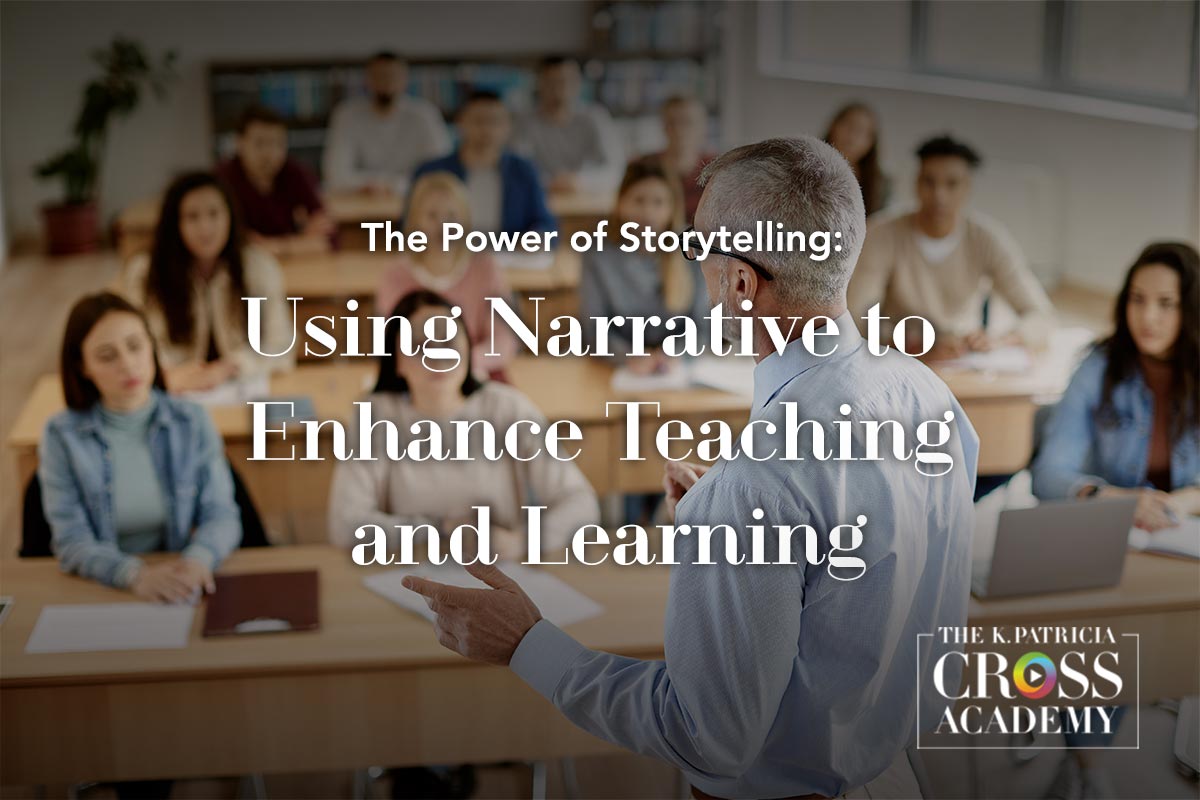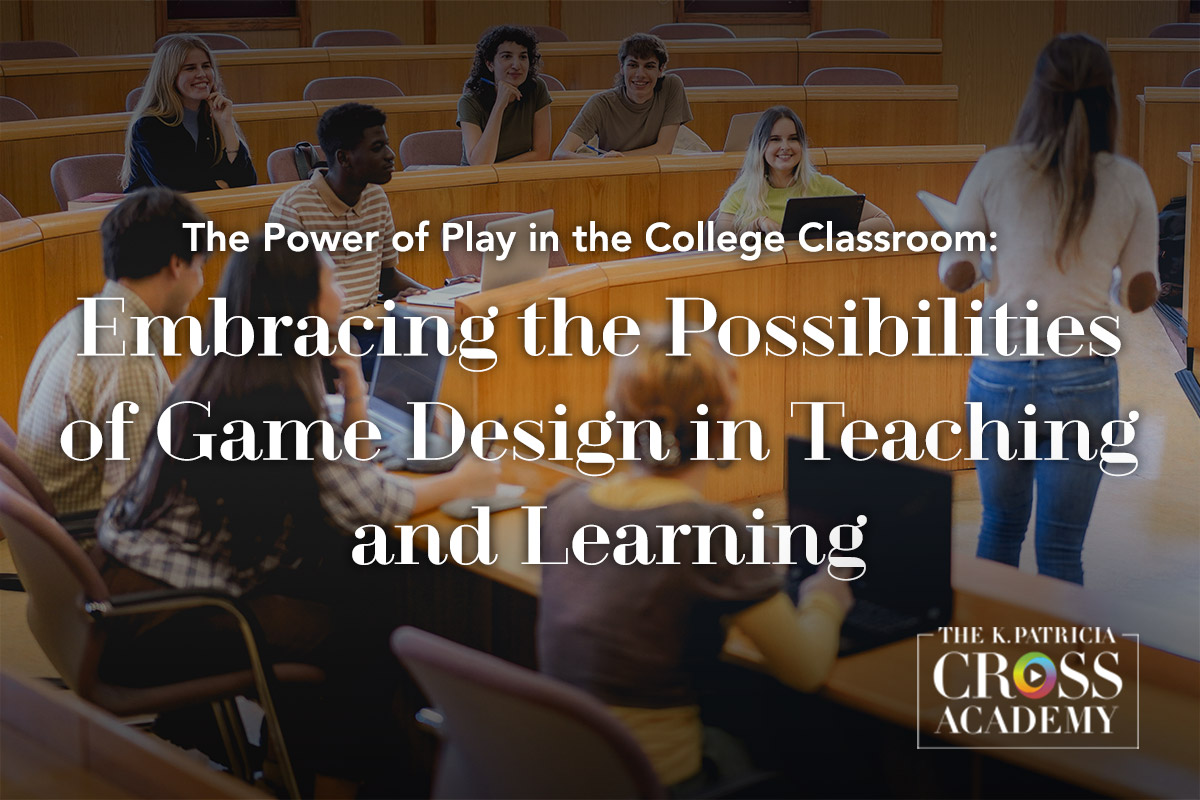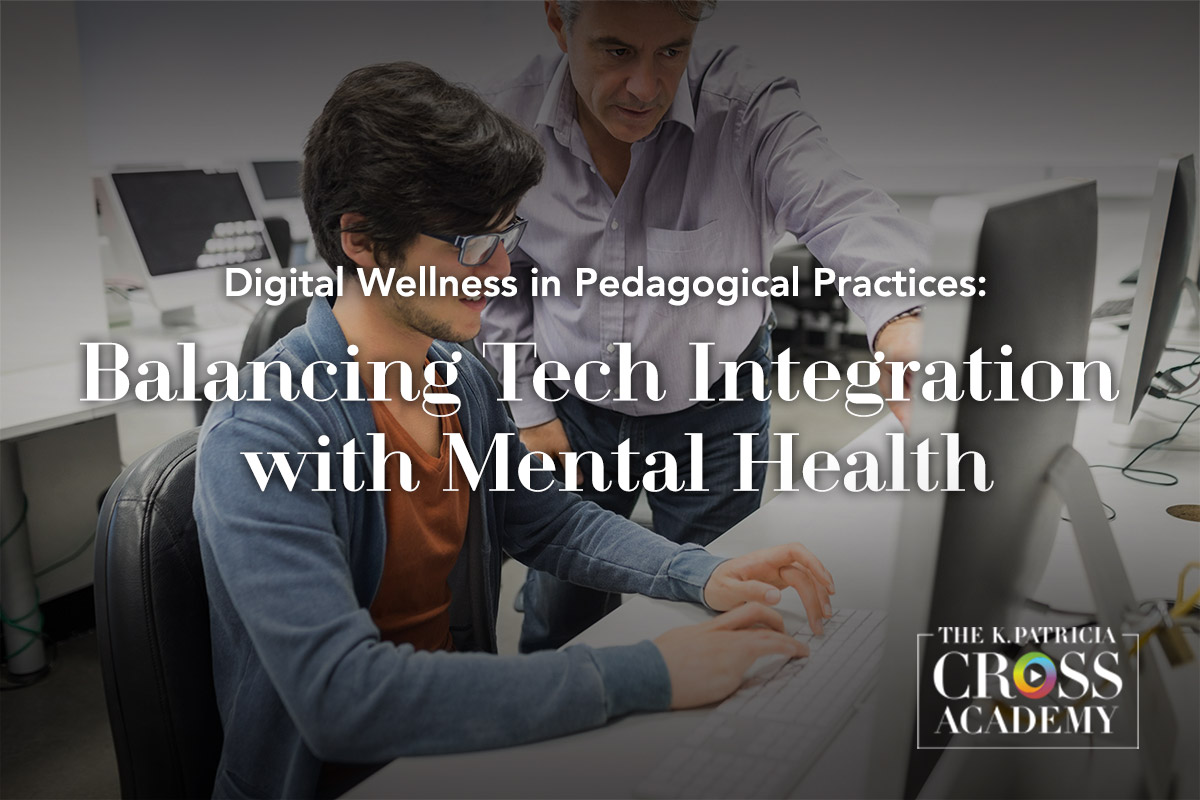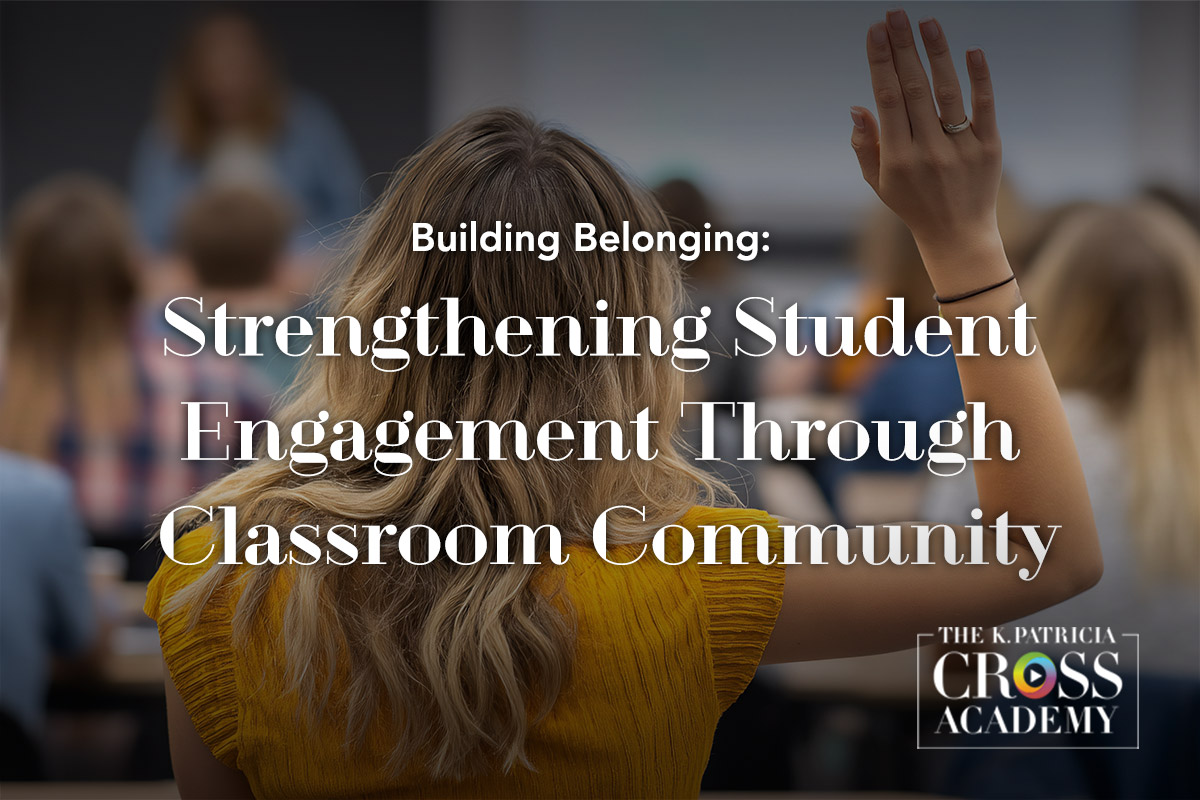
Introduction
College students across the globe experience high levels of stress, anxiety, and depression that may negatively impact their participation and learning in academic environments (Haruna et al., 2025; Laranjeira et al., 2022; Laranjeira & Teixeira, 2025). One evidence-based way to address these challenges is to foster a strong sense of classroom community (Appleton et al., 2008; Laranjeira & Teixeira, 2025; Li & Xue, 2023, Trolian, 2024). Multiple studies suggest that when students feel respected, psychologically safe, and connected to their instructors and peers, they are more motivated and engaged in their academic pursuits, enhancing their learning outcomes (Appleton et al., 2008; Kuh et al., 2008; Prananto, 2025). This post explores research-supported teaching strategies that help instructors intentionally cultivate classroom communities that strengthen student engagement.

Why Community Supports Strong Student Engagement
Learning is an inherently social process where knowledge is created collaboratively within a given knowledge community (Vygotsky, 1978).
Establishing psychological safety, or a social environment where people feel safe to take interpersonal risks, is paramount for fostering the trust necessary for optimal student engagement (Edmondson, 1999).
Yet it is important to remember that community-building is not a cure-all. Poorly designed group activities or unaddressed issues with power dynamics are factors that can undermine psychological safety and a sense of belonging in the classroom (Allen et al., 2024; Donelan & Kear, 2023). For all students to feel valued and heard, instructors must be deliberate in their design process and monitor the group dynamics that evolve in the classroom.
The following section explores ways instructors can intentionally create a sense of connection through meaningful conversations in the classroom.
Fostering Community Through Dialogue
Classroom discourse is a key aspect of student engagement. Lloyd et al. (2016) propose using the Facilitate–Listen–Engage (FLE) model of communication to create a community where learners feel safe to participate in class discussions. This approach positions the instructor as a learning facilitator who plans course activities and guides learners through discussions of them. Both instructors and students engage in active listening and discussion of course topics, creating a strong sense of collective respect in the classroom. The teaching techniques below from the K. Patricia Cross Academy provide practical options for implementing the Facilitate–Listen–Engage (FLE) model:
- Fishbowl [2:51]: In Fishbowl, students form concentric circles with a small group inside and a larger group outside. Students in the inner circle engage in an in-depth discussion, while students in the outer circle listen and critique content, logic, and group interaction. Instructors organize this activity, and students alternate between listening and discussing course concepts.
- Jigsaw [2:17]: In Jigsaw, students work in small groups to develop knowledge about a given topic before teaching what they have learned to another group of students. Jigsaw distributes authority between instructors and students through collaborative discourse, as students temporarily act as teachers themselves instead of listening to lectures from instructors to gain knowledge about a particular topic.
- Affinity Grouping [2:03]: In Affinity Grouping, individual students generate ideas and identify common themes. Then, with the guidance of an instructor, students form groups to sort and organize the ideas accordingly. During the initial stage of this activity, all ideas are equal. As students continue to generate and discuss ideas, themes emerge organically. Learners decide how to organize and categorize their ideas collectively through dialogue instead of having an instructor prescribe a structure for them.

Designing Activities That Build Community
Beyond discussion, active learning strategies are also important in sustaining classroom community. As Haruna et al. (2025) note, beginning studies at an institution of higher education often marks a period of great transition for many students. This change can increase anxiety, stress, and depression levels, as learners often fear personal failure and judgment from others (Bauer, 2007). Incorporating active learning strategies that provide opportunities for meaningful student interaction deepens engagement and promotes psychological safety by strengthening classroom community (Laranjeira & Teixeira, 2025).
The following framework offers collaborative learning activities from the K. Patricia Cross Academy that help students form authentic learning communities:
-
Incorporate Formative Assessments That Privilege Student Voice
- Think-Pair-Share [1:45]:In a Think-Pair-Share, the instructor poses a question, gives students a few minutes to think about a response, and then asks students to share their ideas with a partner. This activity can act as a quick learning check to help students build trust with each other.
- Quick Write [2:36]: Use a digital tool such as Mentimeter to have learners collectively respond to an open-ended prompt. After submitting their responses, students can view the answers provided by their classmates and identify common themes or misconceptions. This visibility to a large group fosters connection and shared understanding.
-
Assign Collaborative Group Work
- Group Grid [2:09]: In Group Grid, group members are given pieces of information and asked to place them in the blank cells of a grid according to category rubrics, which helps them clarify conceptual categories and develop sorting skills. Learners make meaning together through negotiation and collaboration. During this process, the instructor may circulate to provide guidance or additional insight.
- Analytic Teams [2:16]: In Analytic Teams, each team member assumes a different role with specific responsibilities to perform while listening to a lecture or watching a video. Team members then meet to discuss their insights and to analyze information. Because they all have different roles, each student brings a unique perspective. Students exercise autonomy while also relying on each other for the good of the group.
-
Provide Reflective Opportunities
- What? So What? Now What? Journals [2:42]: In What? So What? Now What? Journals, students reflect on their recent course-related activities as they respond to each prompt in a journal entry. Instructors may consider requiring additional meetings where learners share their insights with the class or participate in a peer review session to foster community.
- 3-2-1 [2:15]: In the 3-2-1 technique, students write about 3 things they learned in the lecture, 2 things they found particularly interesting from the lecture, and 1 question they still have about the lecture content. Learners can reflect on what they have learned (and still need to learn!), while instructors may choose to collect responses and share collective insights with the class.
The active learning techniques from the sections above provide strategies for community building that support general well-being in the classroom. When framed as low-stakes formative assessments, these learning activities may build trust between students and instructors, strengthening the classroom community and the engagement within it.
While these techniques offer community-building opportunities, collaborative learning must be carefully considered by instructors to avoid inequitable divisions of labor or anxiety inducing situations. These risks can be managed by establishing well-defined boundaries, assigning clear roles in group projects, explaining expectations, and providing ample opportunity for students to share their experiences. Taking proactive steps like these can help to ensure community-building activities enhance rather than hinder a sense of belonging.

Conclusion
Creating classrooms where students feel they belong is an important way to enhance student engagement (Li & Xue, 2023). Incorporating meaningful discussions and active learning exercises into classroom instruction are powerful ways to build the sense of community that sustains connection. By prioritizing psychological safety, dialogue, and shared responsibility, instructors can ensure their classrooms are spaces where learners feel empowered to engage deeply with course content and overcome many of the challenges they face as higher education students.
Suggested Citation
Gutenson, L. D. (n.d.). Building belonging: Strengthening student engagement through classroom community. CrossCurrents. https://kpcrossacademy.ua.edu/building-belonging-strengthening-student-engagement-through-classroom-community/
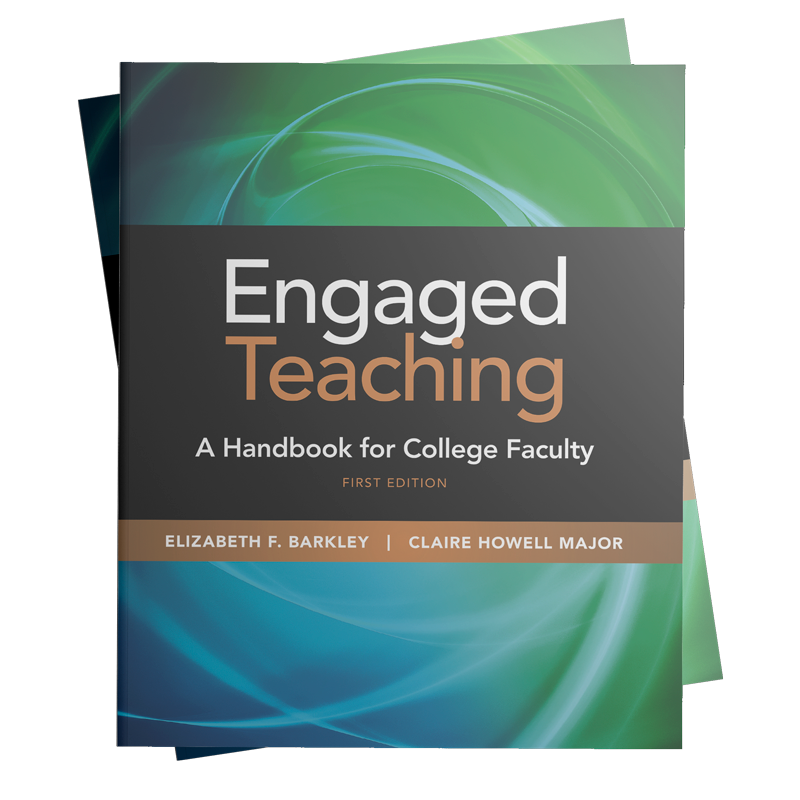
Engaged Teaching
A Handbook for College Faculty
Available now, Engaged Teaching: A Handbook for College Faculty provides college faculty with a dynamic model of what it means to be an engaged teacher and offers practical strategies and techniques for putting the model into practice.
